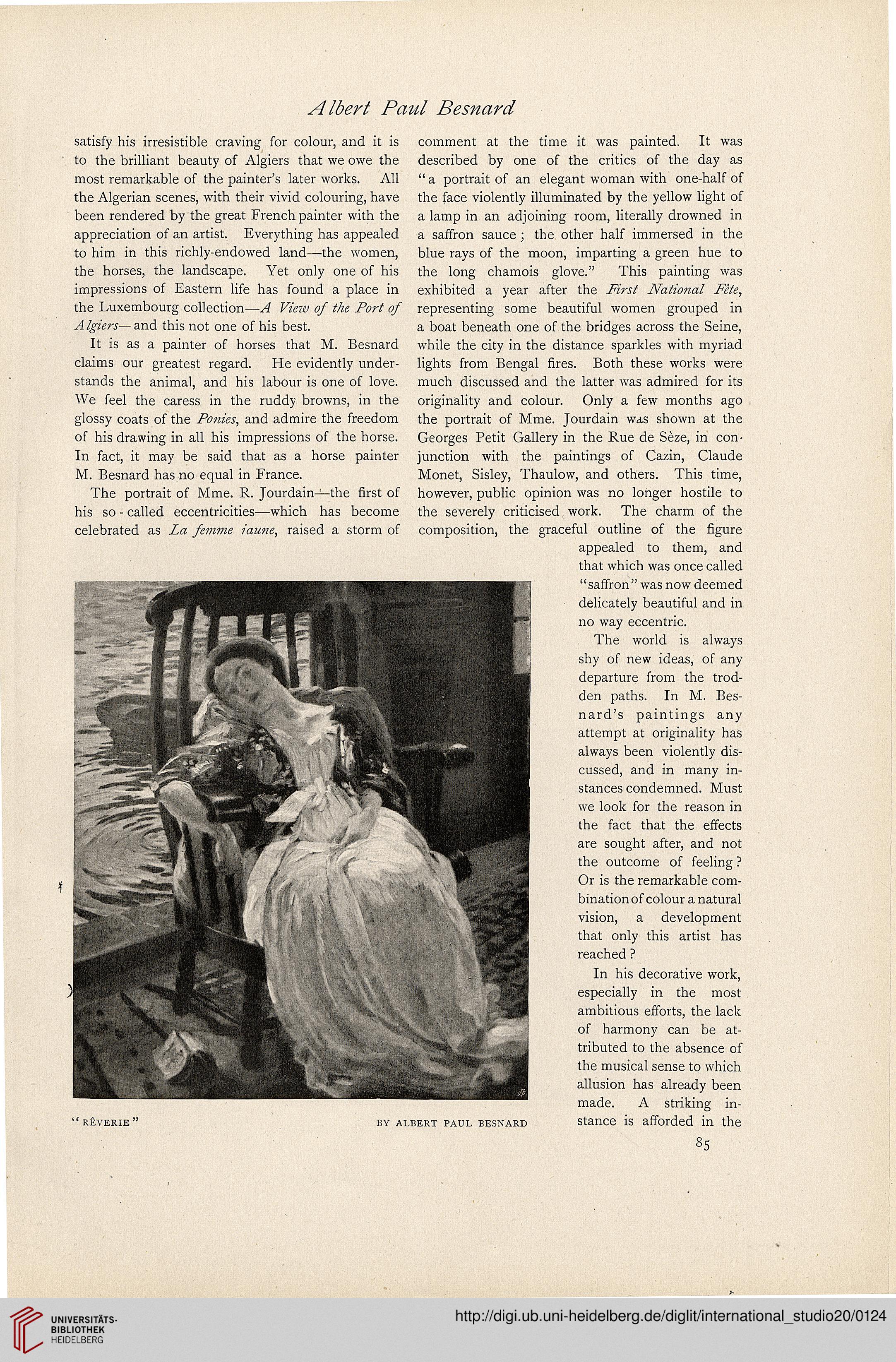satisfy his irresistible craving for colour, and it is
to the brilliant beauty of Algiers that we owe the
most remarkable of the painter's later works. All
the Algerian scenes, with their vivid colouring, have
been rendered by the great French painter with the
appreciation of an artist. Everything has appealed
to him in this richly-endowed land—the women,
the horses, the landscape. Yet only one of his
impressions of Eastern life has found a place in
the Luxembourg collection—^4 ^ p/
A — and this not one of his best.
It is as a painter of horses that M. Besnard
claims our greatest regard. He evidently under-
stands the animal, and his labour is one of love.
We feel the caress in the ruddy browns, in the
glossy coats of the and admire the freedom
of his drawing in all his impressions of the horse.
In fact, it may be said that as a horse painter
M. Besnard has no equal in France.
The portrait of Mme. R. Jourdain—the first of
his so - called eccentricities—which has become
celebrated as Za yiwwzg /az<w, raised a storm of
comment at the time it was painted. It was
described by one of the critics of the day as
" a portrait of an elegant woman with one-half of
the face violently illuminated by the yellow light of
a lamp in an adjoining room, literally drowned in
a saffron sauce ; the other half immersed in the
blue rays of the moon, imparting a green hue to
the long chamois glove." This painting was
exhibited a year after the YhcsV WaA'wza/
representing some beautiful women grouped in
a boat beneath one of the bridges across the Seine,
while the city in the distance sparkles with myriad
lights from Bengal fires. Both these works were
much discussed and the latter was admired for its
originality and colour. Only a few months ago
the portrait of Mme. Jourdain was shown at the
Georges Petit Gallery in the Rue de Seze, in con-
junction with the paintings of Cazin, Claude
Monet, Sisley, Thaulow, and others. This time,
however, public opinion was no longer hostile to
the severely criticised work. The charm of the
composition, the graceful outline of the figure
appealed to them, and
that which was once called
"saffron" was now deemed
delicately beautiful and in
no way eccentric.
The world is always
shy of new ideas, of any
departure from the trod-
den paths. In M. Bes-
nard's paintings any
attempt at originality has
always been violently dis-
cussed, and in many in-
stances condemned. Must
we look for the reason in
the fact that the effects
are sought after, and not
the outcome of feeling ?
Or is the remarkable com-
bination of colour a natural
vision, a development
that only this artist has
reached ?
In his decorative work,
especially in the most
ambitious efforts, the lack
of harmony can be at-
tributed to the absence of
the musical sense to which
allusion has already been
made. A striking in-
stance is afforded in the
85
"REVERIE" BY ALBERT PAUL BESNARD




